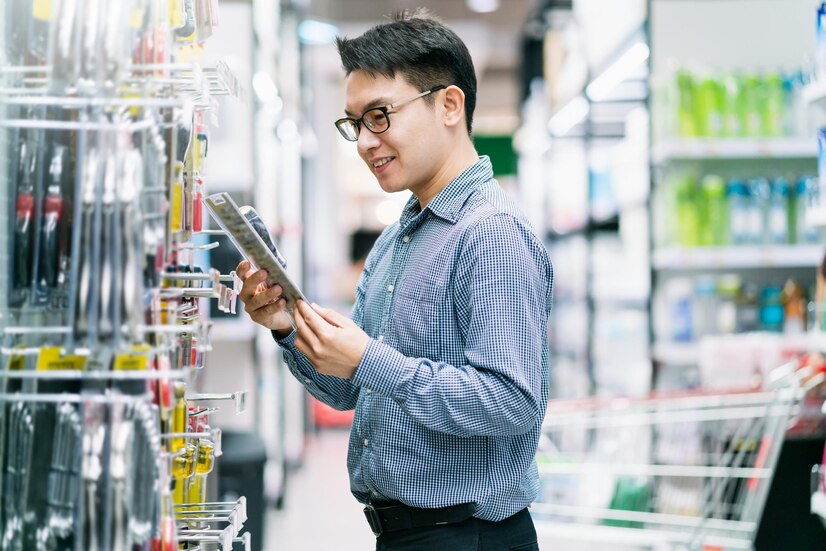Advanced Retail Visibility: Improving On-Shelf Performance With AI
5 Mins Read
Published on: 19 February 2024
Last Updated on: 13 November 2024

toc impalement
The retail landscape has undergone a decent transformation in recent years. As a result, advanced technologies like AI are ruling the industry! Whether it’s a camera shelf or integrated logistics management, AI is showing us the power of automation.
However, while considering the AI-powered On-Shelf monitoring system, some key considerations are:
- Privacy
- Accuracy
- System Integration
Inventory management is a prime concern for retailers. They face stockouts, lack of placement, and shelf congestion while managing shelves. If your shelf is not attractive to the audience, it might lead to poor business integration.
From accurate demand forecasting to reduced waste, everything is possible through AI and computer vision.
If you want to get a real-time update on your shelf and track it in an error-prone way, rejecting traditional manual methods is the only solution. AI has the power to give you powerful solutions regarding store shelves with real-time images, live streaming, and personalized dashboards.
Why Use AI For On-Shelf Monitoring

AI-powered on-shelf monitoring provides several advantages over traditional methods. Firstly, AI algorithms can process large amounts of data in real time, which means retailers can monitor shelves constantly and make necessary changes quickly.
Additionally, AI can detect patterns and trends that may not be immediately apparent to human observers, leading to better decision-making and improved on-shelf performance.
Furthermore, AI-powered monitoring is more accurate and reliable than manual methods, reducing the chances of errors and improving the overall effectiveness of the monitoring process.
Image Capture
Cameras placed at strategic locations in the store capture images or videos of the shelves. These images or videos are then fed into the machine learning system, which uses advanced computer vision algorithms to analyze the data in real time.
The system can identify products, detect their location, and determine if they are in the right spot or if they need to be restocked. This allows retailers to monitor their shelves constantly and make necessary changes quickly, leading to improve on-shelf availability and better customer experience.
Real-Time Monitoring

With mini wireless cameras, you will find it easy to monitor real-time images with better machine learning. You will get a personal dashboard that will help you to go for a real-time monitoring process.
By monitoring the latest images of your shelf, you can stay up to date with the data required to manage the shelf.
Data Processing
After the cameras capture images or videos of the shelves, the data is processed using advanced computer vision algorithms to generate insights and actionable information.
Retailers now receive alerts on every instance, like reorganizing, restocking, and price updates. Data is everything, and you need to prioritize it.
This helps retailers make quick and informed decisions, improving on-shelf availability and better customer experience.
The AI-powered on-shelf monitoring system can also provide reports and analytics that can be used to optimize shelf space utilization and increase sales. Overall, the captured data is crucial in providing valuable insights to retailers and helps them to stay ahead of the competition.
Improve On-Shelf Availability
Integrating computer vision techniques in the on-shelf monitoring process can provide further benefits beyond just improving shelf performance.
By integrating with the retailer’s ERP system, AI-powered insights can also help with retail task management and IoT asset management, leading to improved on-shelf availability (OSA).
This can help retailers to reduce waste, optimize inventory levels, and ultimately improve the overall customer experience.
Benefits Of Using AI-Powered On-Shelf Monitoring

In today’s highly competitive retail landscape, maintaining optimal on-shelf availability is crucial for retailers to stay ahead of the curve. However, traditional on-shelf monitoring methods can be time-consuming, often leading to inaccurate data.
This is where AI-powered on-shelf monitoring comes in. By deploying advanced computer vision algorithms, retailers can now monitor their shelves in real time and optimize shelf space utilization.
Here, we will discuss the various benefits of using AI-powered on-shelf monitoring, including improved customer experience, reduced waste, and significant time and cost savings.
Improved Customer Experience
Retailers are missing almost $1 trillion in business due to the lack of hands-on experience. An organized shelf can lead to a better customer experience.
Commonly, customers go to the competitors who have better on-shelf availability of preferred products. So, there is a better chance of increasing your unit sales with customer-preferred on-shelf availability of products.
Reduced Stockout Situations
With AI-powered on-shelf monitoring, you can identify stockout situations on shelves. So, it will help you to take quick action while dealing with real-time data.
Additionally, retailers can receive alerts when a product is running low or out of stock, enabling them to restock the shelves quickly and efficiently.
This not only improves on-shelf availability but also prevents lost sales and reduces waste by minimizing overstocking.
By leveraging the power of AI and machine learning, retailers can stay ahead of the curve and deliver better customer experiences while increasing sales and profitability.
Reduce Waste

Waste management is the prime concern of the retailers these days.
Why?
Well, refilling your inventory is not the only responsibility you have! You need to read your customers with better tracking of your shelves. The more you monitor the shelf, the better you will be able to understand the in-and-out behavior of the products.
So, ultimately, on-shelf monitoring will lead to better waste management as you will gain knowledge and understanding of customer behaviors and stock management.
Time And Cost Savings
Automating on-shelf monitoring can definitely reduce the need for manual checkups, allowing employees to focus on more important tasks and improving overall productivity.
This can lead to significant time and cost savings for retailers while also ensuring that their shelves are constantly monitored and optimized for better on-shelf performance.
By deploying AI-powered on-shelf monitoring systems, retailers can streamline their operations and improve the overall customer experience, ultimately driving sales and profitability.
Better Shelf Space Utilization
AI-powered inventory management models are best at their work! With machine learning, you get suggestions on optimal product placement. So, you will be able to save space with a better arrangement of products on your shelf.
What are you waiting for?
Get ready to increase your sales performance this year with OSA!
You may also like:


















Comments Are Closed For This Article